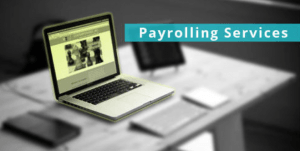Payrolling is the organization of segmentation workers in a company that uses payroll services or agencies to organize their pay and prepare all the official documents needed when hiring new workers. Payrolling gives companies freedom from the hassles of paperwork associated with hiring employees.

Payroll services make it easier for small business owners to pay their employees and get back to their core business functions. Most payroll services calculate employee pay and taxes automatically and send your payroll taxes and filings to the IRS and your state’s tax department(s) for you. With a full-service provider like Square Payroll, you can even keep track of hours worked, import them directly to your payroll, and pay employees by direct deposit.
What is payroll?
A payroll is a company’s list of its representatives; however, the term is usually used to allude to the aggregate sum of money that an organization pays to its workers.
What is payroll processing?
The payroll process refers to the steps required to pay employees each pay period and involves employees’ hours worked, their pay rate, and deductions.
What is payroll processing software?
Payroll Processing Software is a computer program that helps automate the process of payroll processing for employees.
What is payroll management?
Payroll management refers to the administration of an employee’s financial records, which include salaries, wages, bonuses, deductions, and net pay. These records must be maintained and kept by the employer for federal requirements, especially when it pertains to payroll taxes such as income tax withholding records, social security records, and federal unemployment tax records.
The Best Payrolling Companies
- Payroll Services
- Statutory Compliance
- HRMS payroll software
Benefits of Using a Payroll Processing System
There are lots of benefits to using payroll software for your company. However, you ought to pick the correct process that suits your requirements and provides good customer support. Here is a list of payroll software benefits:
- Cost-Effective
- Generating accounts (JV)
- Tax updates
- Inbuilt leave and attendance data as automated inputs
- Added Security
- Multiple report generation
- Reminders
- Save time and money.
- Easy and fast payroll reconciliation
How to process payroll with a payroll service
Here’s how to payroll through a payroll service company:
Choose a full-service payroll provider.
If you’re not sure how to do payroll yourself, use payroll software that reduces the risk of errors or fines. Many payroll processing services, like Square Payroll, handle your payroll taxes, filings, and new hire reporting for you and allow you to complete payroll online. Signing up takes minutes, so you can quickly start doing your own payroll the same day you sign up.
Add your employees.
You need to set up your employees before you process their payroll. Adding employees you’re paying for the first time is generally quicker; if you’re switching to a new payroll provider, then you also need to add your current employees’ year-to-date payroll information.
Either way, you generally need to enter employee names, addresses, Social Security numbers, and tax withholding information. If you’re using Square Payroll and would like to pay employees using direct deposit, you can just enter your employees’ names and email addresses so they can enter their personal information themselves.
Track hours worked and import them.
The U.S. Department of Labor requires employers to keep track of wage records, such as timecards, for up to two years. Certain states may have longer retention requirements; be sure to check the specific requirements in your state. You can track time using your Square Point of Sale and import the timecards to payroll.
Process your first payroll.
Click Send. That’s all.
Keep track of your tax payments and filings.
The IRS requires tax forms to be kept for three years. Certain states may have longer retention requirements; be sure to check the specific requirements in your state. With Square Payroll, you can find copies of your tax filings on your dashboard.
Alternatively, you can hire an accountant to do your payroll for you.
Maybe you don’t want to learn how to do payroll yourself or use a payroll service; consider hiring an accountant. A good accountant can process your payroll and make sure your tax payments and filings are taken care of. Check out these.
How to Process Payroll Yourself
Step 1: Have all employees complete a W-4. To get paid, employees need to complete Form W-4 to document their filing status and keep track of personal allowances.
Step 2: Find or sign up for employer identification numbers. Before you do payroll yourself, make sure you have your employer identification number (EIN) ready.
Step 3: Choose your payroll schedule. After you register for your employer identification numbers, get insured (don’t forget workers’ compensation), and display workplace posters, you need to add three important dates to your calendar.
Step 4: Calculate and withhold income taxes. When it comes time to pay your employees, you need to determine which federal and state taxes to withhold from them.
Step 5: Pay taxes. When it’s time to pay taxes, you need to submit your federal, state, and local tax deposits, as applicable (usually on a monthly basis).
Step 6: File tax forms and employee W-2s. Finally, be sure to send in your employer’s federal tax return (usually each quarter) and any state or local returns, as applicable.